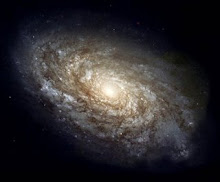This information was provided by Answers In Genesis, an excellent source of material relating to Creation and evolution. Please visit their website using the link in the upper left.
Q: Why was Lucy buried first?
A: God commanded humans and animals leaving Noah’s Ark to reproduce and multiply and fill the earth. According to the Bible, humans disobeyed God’s command and settled at Babel. In contrast, if biblical geologists are right about which rocks were formed after the Flood, animals quickly spread over the earth as God had commanded.
Dotted around the world, sitting on top of rocks we think date from the end of the Flood, are piles of sediment thousands of feet thick. We deduce, then, that these are post-Flood sediments, leaving a record of conditions on the earth for the centuries immediately following the Flood.
The nature and thickness of the sediment suggests that centuries of catastrophes continued to occur while the unstable earth was recovering from the violence of the Flood. Some of these catastrophes, such as supervolcanoes, created excellent conditions for preserving fossils. These fossils show animals appearing on each continent—and being buried in local catastrophes—long before humans are found on that same continent.
Most mammal “kinds,” such as horses and dogs, left the Ark by family. Biology research suggests that each kind diversified into scores of species and varieties before humans ever left Babel. Most of the diversity of animals died out quickly, leaving fossils of many extinct species but just a few species surviving in the present. (By Abraham’s day, it appears that sheep, oxen, camels, and donkeys were already similar to the ones we see today; see Genesis 12:16).
Apes follow this same pattern. Before humans left Babel, it appears that apes had already spread over much of the Old World and had diversified into a large array of species. “Lucy” is one of the more famous specimens of one of these ape species—Australopithecus afarensis.
To read more about the post-Flood world, see Lucy Was Buried First by Dr. Kurt Wise.
News to Note Quick Look
Keeping the Bible out: A Discover magazine reporter takes an insider’s peek into the Pontifical Academy of Sciences. Sadly, the fruits of an old-age mentality are on display at the Vatican. Read more.
Lily proof: Darwin fans fret no more. From the climes of Canada comes definitive proof of evolution in action. At least, that’s what the headline says. Read more.
New neighbor: It may not have an impressive name, but minor planet 2006 SQ372 has a big role to play. Could this be the answer to the comet conundrum? Read more.
Also: bursting through millions of years, counting on it, raising the GPA, and eBaying for science. Read more.

No comments:
Post a Comment